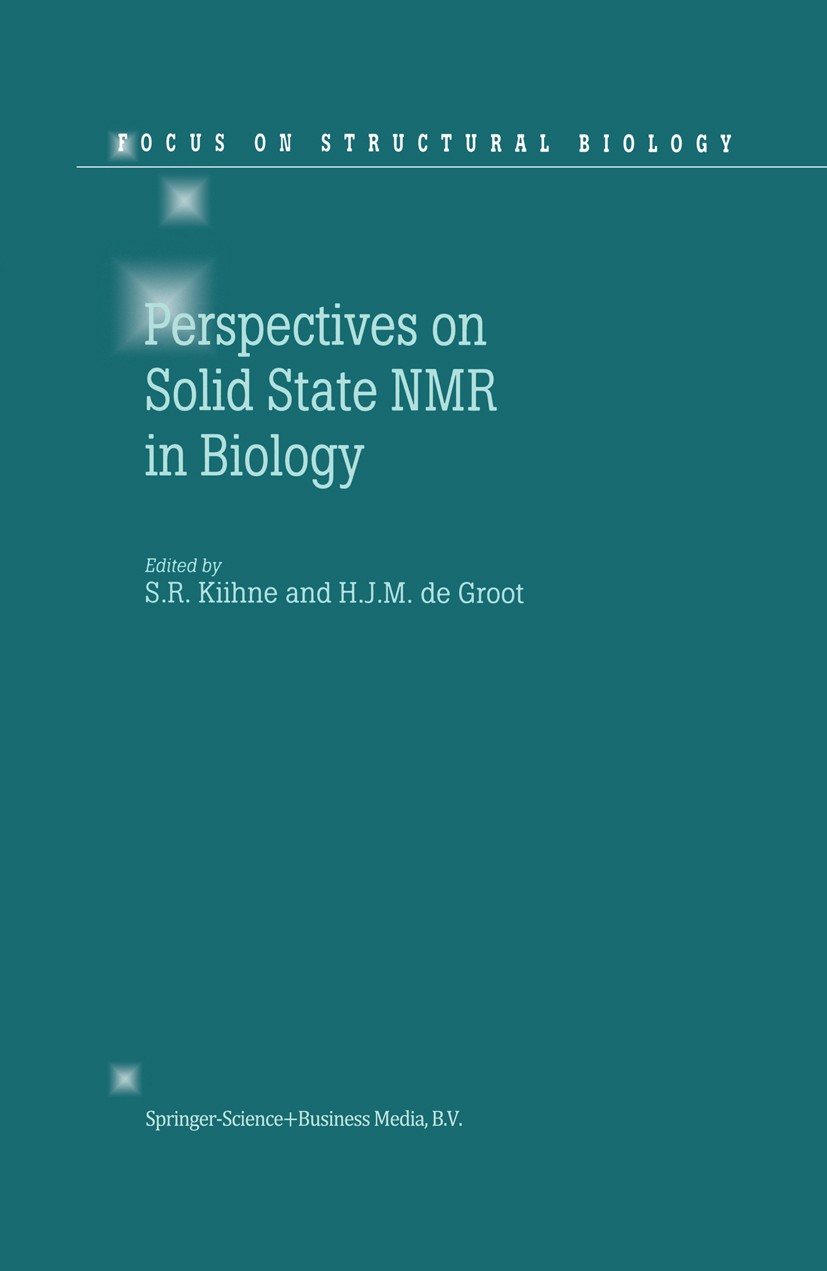| 书目名称 | Perspectives on Solid State NMR in Biology |
| 编辑 | Suzanne R. Kiihne,Huub J. M. Groot |
| 视频video | http://file.papertrans.cn/745/744925/744925.mp4 |
| 丛书名称 | Focus on Structural Biology |
| 图书封面 |  |
| 描述 | Solid state NMR is rapidly emerging as a universally applicablemethod for the characterization of ordered structures that cannot bestudied with solution methods or diffraction techniques. Thisproceedings -; from a recent international workshop -captures an image of the latest developments and future directions forsolid state NMR in biological research, particularly on membraneproteins. Detailed information on how hormones or drugs bind to theirmembrane receptor targets is needed, e.g. for rational drug design.Higher fields are bringing clear improvements, and the power of solidstate NMR techniques for studying amorphous and membrane associatedpeptides, proteins and complexes is shown by examples of applicationsat ultra-high fields. Progress in protein expression, experimentaldesign and data analysis are also presented by leaders in theseresearch areas. |
| 出版日期 | Book 2001 |
| 关键词 | NMR; Resol; biology; proteins; spectroscopy; Biological Microscopy |
| 版次 | 1 |
| doi | https://doi.org/10.1007/978-94-017-2579-8 |
| isbn_softcover | 978-90-481-5744-0 |
| isbn_ebook | 978-94-017-2579-8Series ISSN 1571-4853 Series E-ISSN 2542-9566 |
| issn_series | 1571-4853 |
| copyright | Springer Science+Business Media Dordrecht 2001 |
 |Archiver|手机版|小黑屋|
派博传思国际
( 京公网安备110108008328)
GMT+8, 2025-11-22 09:43
|Archiver|手机版|小黑屋|
派博传思国际
( 京公网安备110108008328)
GMT+8, 2025-11-22 09:43


